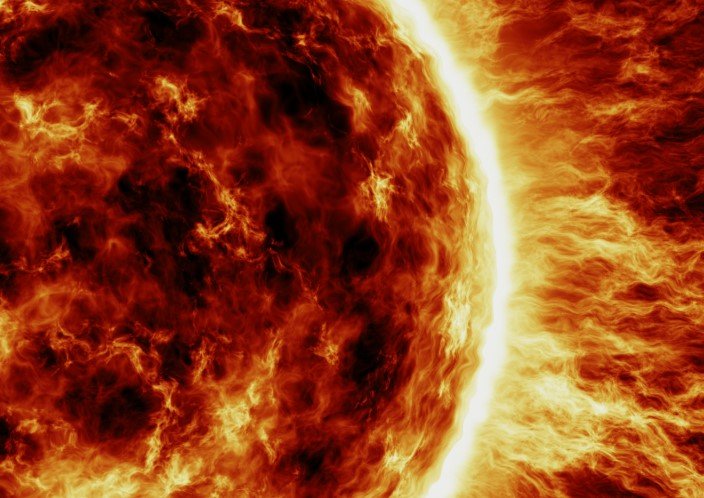India’s astronomy community has unveiled a forward-looking plan to boost solar physics and space weather research, focusing on solar eruptions that could harm satellites and tech on Earth. Released on October 23, 2025, in Bengaluru, this vision draws on current skills and new tools to predict and reduce space weather risks over the next decade.
Key Challenges in Solar Activity
Solar flares and coronal mass ejections pose real threats to modern life. These events release huge bursts of energy and particles from the Sun, which can disrupt power grids, navigation systems, and communication networks.
Experts point out that better understanding of these eruptions is crucial. A scientist from the Aryabhata Research Institute of Observational Sciences stressed the need to study how they form and travel through space. This knowledge helps protect astronauts and satellites in orbit.
Recent missions like Aditya-L1 have already provided fresh data on solar winds and magnetic fields. Launched in 2023, the spacecraft continues to send back images of dynamic solar events in 2025, showing active regions on the Sun’s surface.
India plans to use ground-based observatories and space tools to track these changes. The goal is to build models that forecast space weather days in advance, much like weather reports on Earth.
Major Projects Driving Progress
The Indian Institute of Astrophysics hosted a global conference in January 2025 to mark 125 years of solar studies at the Kodaikanal Solar Observatory. Over 200 scientists from around the world discussed solar magnetism and its links to space weather.

This event highlighted upcoming facilities, such as advanced telescopes for real-time Sun monitoring. One key project involves upgrading existing observatories to capture high-resolution images of coronal loops, the magnetic structures that guide solar material.
Collaborations with international groups are also on the rise. For instance, data from NASA’s missions in 2025, like the Interstellar Mapping and Acceleration Probe, complements Indian efforts to map the heliosphere, the Sun’s protective bubble around our solar system.
Here are some standout initiatives:
- Aditya-L1: India’s first solar observatory in space, now delivering data on solar flares and their Earth impacts.
- Ground networks: Stations across India monitoring ionosphere changes caused by solar activity.
- Educational programs: Workshops for students and teachers to build the next generation of space weather experts.
These steps aim to make India a leader in turning solar science into practical forecasts.
Impacts on Technology and Society
Space weather events can cause blackouts and satellite failures. In May 2024, strong solar storms led to geomagnetic disturbances that affected global positioning systems and radio signals.
India’s vision includes creating a resilient society against such threats. By studying the Sun’s interior and atmosphere, researchers hope to predict eruptions that could damage power lines or aviation tech.
A recent breakthrough came from Chandrayaan-2 in 2025. The mission observed how coronal mass ejections directly alter the Moon’s thin atmosphere, confirming theories about solar influences on nearby bodies.
This ties into broader goals, like safeguarding India’s growing satellite fleet. With more launches planned, accurate space weather alerts become essential for mission success.
| Aspect | Current Challenge | Proposed Solution |
|---|---|---|
| Solar Flares | Sudden energy releases disrupting comms | Advanced AI models for early detection |
| Coronal Mass Ejections | Particle storms hitting Earth | Multi-point observations from space and ground |
| Space Weather Forecasting | Limited accuracy in predictions | Integrated data from new telescopes and satellites |
| Tech Impacts | Risks to power grids and navigation | Public awareness and resilient infrastructure designs |
These efforts show a balanced approach to science and real-world needs.
Future Outlook and Global Ties
Over the next ten years, India’s astronomers expect big leaps in understanding the Sun’s cycles. The current solar maximum in 2025 brings more flares, offering a perfect time for observations.
Links with global bodies, such as sharing data from the Indian Space Weather Conference, strengthen this work. Past events in 2023 paved the way, and new ones in 2025 focus on the Aditya-L1 findings.
Young researchers are getting involved through internships and workshops. For example, summer programs in 2025 at top institutes teach hands-on solar physics.
This vision not only advances science but also boosts India’s role in space exploration. By tackling solar mysteries, the community aims to protect our tech-driven world.
Education and Community Involvement
Building public knowledge is a core part of the plan. Schools and colleges now host events on space weather during World Space Week, explaining how satellites aid daily life.
A workshop in Vijayapura in 2025 drew students to learn about astronomy tools. Such programs spark interest and train future experts.
India’s AstroSat, completing a decade in space, continues to contribute data on stellar connections to solar behavior. This long-term view helps in spotting patterns that link the Sun to other stars.
Overall, the push combines research with outreach, ensuring broad benefits.
What do you think about India’s growing role in solar science? Share your thoughts in the comments and spread this article to spark discussions on space weather’s future.
